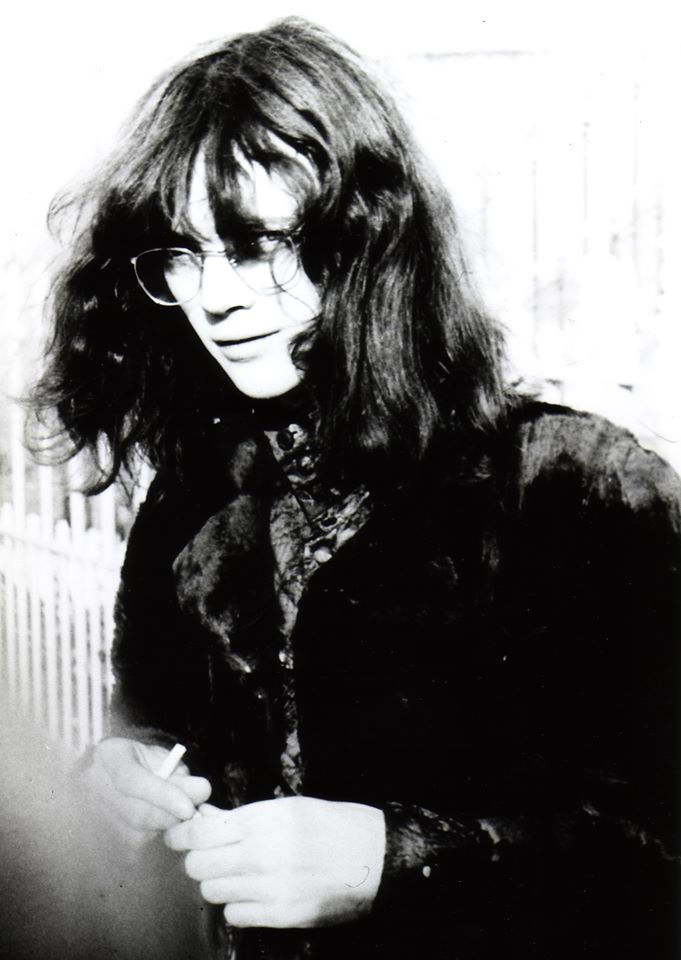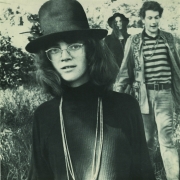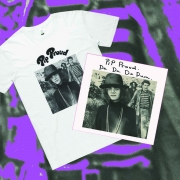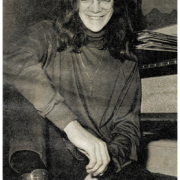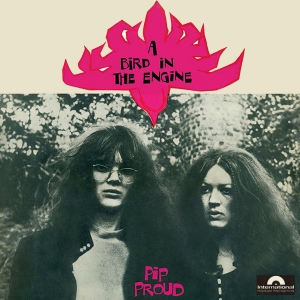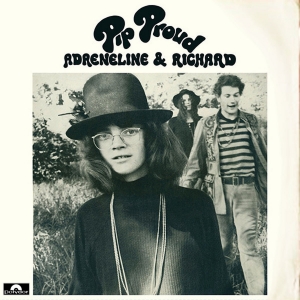review at savagesaints.blogspot.com
If any Australian performer of the Sixties deserves the description “cult figure”, it’s Sydney singer-songwriter-poet Philip “Pip” Proud (b. 1947). Among his fans are Ian McFarlane, who likens him to Britain’s legendary Syd Barrett and American Tom Rapp (Pearls Before Swine). One of his most ardent champions is Sydney writer-musician David Nichols (The Cannanes), who describes Pip as “Australia’s first pop primitive” and hails him as “the greatest Australian singer-songwriter of the 1960s”. In the late Sixties Pip was touted as Australia’s answer to Bob Dylan, but this was a simplistic comparison. Nichols suggests a commonality with other distinctive solo artists like Nick Drake, Richard Thompson, Melanie, Donovan and Sandy Denny, but perhaps more so with some of the ‘underground’ artists of the last 10-15 years:
“He was, of course, twenty-five years ahead of his time. Listen to Lou Barlow’s Sentridoh, or the Folk Implosion’s Kids soundtrack. Listen to other cutting-edge U.S. artists like The Mountain Goats, Beck, Guided By Voices or The Spinanes. Or listen to New Zealand’s Alistair Galbraith, such a Proud fan he led off his 1994 Cluster EP with a song called “Pip Proud”. Then listen to Pip Proud and tell us he doesn’t fit so snugly with those sounds it’s almost uncanny.”
Pip’s style was unique. He wrote strange, plaintive song-poems about modern urban life and love, which he sang in his distinctive high, quavering voice. What made his recordings really stand out was that he accompanied himself by strumming or tapping on the strings of his unamplified electric guitar. Italian music writer Piero Scaruffi describes Pip’s songs as
“… bizarre, childish rants of an hallucinated mind, accompanied by an out-of-tune guitar and paced at irregular tempos. The only precedent was the acid-folk music of the Holy Modal Rounders.”
Like Syd Barrett, Pip recorded two remarkable solo Albums of original music in the late Sixties — which now fetch hundreds of dollars apiece on the collectors’ market — and then he more or less disappeared from view. But interest in his remarkable music was kept alive by a dedicated few, and in the mid-1990s his musical career was revived, thanks largely to the efforts of super-fan David Nichols. We are delighted to report that, since then, Pip has recorded and released several CDs of new music, which have gained international release.
Information about Pip’s life and career is scant. What we know so far is that Pip was born in Adelaide and moved to Sydney in his late teens, where he began creating a large body of poetry, songs, novels and plays and also — like most of his contemporaries — became involved in the anti-war movement. Ca. 1967 he was ‘discovered’ by stockbroker and art patron Michael Hobbs, who financed Pip’s first recording, the privately-recorded album De Da De Dum. It was released on the Grendel label, and apparently only about fifty copies were pressed, which must qualify it as one of the rarest and most collectible of all Australian recordings of that era.
Fortunately for posterity, Pip’s album was heard by Bob Cooley, A&R manager at Polydor Records (the Australia branch of what later became the Polygram group). He was impressed by the unque qualities of Pip’s music and signed him to the Philips label. Pip’s first commercial LP was a re-recording of the songs from his debut album, released in 1968 under the title Adrenaline and Richard . It was well-reviewed in Go-Set which led to Pip making a few TV appearances and giving a handful of live performances.
Another person who became fascinated with Pip’s music was Sydney artist and underground filmmaker Garry Shead, who was part of the now-legendary Ubu film collective. There are several connections between Hobbs and Shead — Hobbs had purchased Shead’s portrait of fellow filmmaker Albie Thoms, which had been exhibited at the 1968 Royal Easter Show in April (it is now in the collection of the the Wollongong City Art Gallery), and he later financed Shead’s film Live Between Evil.
With backing from Hobbs, Shead made a 15-minute experimental film documentary about Pip, also called De Da De Dum. It was shot in early 1968 with a crew drawn from the cast of Terror Australis. This experimental theatre production, which had premiered at the Jane St Theatre in Sydney in March that year, featured a number of future “big names” of Australian arts, including Shead, future film/TV stars Garry McDonald, Helen Morse, Jennifer West, Dean Letcher, Johnny Allen (who went on to organise the 1973 Aquarius Festival), Jim Sharman and Oz co-editor Richard Walsh.
The publicity sheet for the film is reproduced in Peter Mudie’s brilliant 1997 book on Ubu:
“This experimental documentary observes Pip and his constant companion Alison in a variety of settings which project Pip’s attitudes to urban life. Slow, fast and single frame filming are used, and some images are drawn on and punctured. Pip sings his own songs on the sound track.”
The film was completed in May 1968 and it premiered on 16 May at the (now demolished) Rose Bay Wintergarden cinema as part of a program of underground films by American filmmaker Bruce Conner, which also featured new Australian works including De Da De Dum, Matuta (the debut film by renowned director Paul Cox), and Bruce Petty’s anti-war film Hearts and Minds, which Petty had been unable to get screened on Australian TV. This event was a major success, with over 1600 people attending, and De Da De Dum was also screened as part of Ubu’s “Underground 68” program at the Playhouse Theatre in Canberra on June 27-28.
Some time during this period Pip formed a band, The Pip Proud Group, and he recorded his second solo album A Bird In The Engine, which was released in 1969. He then travelled to the UK, apparently on the promise of a possible signing to The Beatles’ Apple Records. But like so many other Australian musos of the time, his sojourn in the UK was a frustrating period spent living on the breadline, waiting and working for breaks that never came his way. On his return to Australia he was dropped by Philips, effectively ending his recording career, and it would be more than 25 years before he returned to the studio.
During the ’70s Pip continued to write, producing poems, novels and plays, and around 1970-71 he was living in Sydney in the same building as his friend, noted ‘underground’ poet Michael Dransfield. Most of Pip’s work remains unpublished, but in the late 1970s the ABC’s rock station Double Jay produced radio adaptations of two of his plays, Vlort Phlitson, Intergalactic Trouble Shooter and Don Coyote and presumably these are preserved in the ABC archives.
Nothing else was heard from Pip until the mid-1990s, when he was tracked down by David Nichols. With the help of Nic Dalton, the wonderful Half A Cow label remastered and reissued Pip’s two Albums as the CD Eagle-Wise, which was released in July 1996. Nichols and Dalton also took Proud into the studio for his first new recordings in since 1969, which resulted in the album Oncer, which also received a US release on the Emperor Jones label.
By this time Pip was a father of five, living on the north coast of NSW; since then he has apparently moved to Healesville, on Melbourne’s eastern fringe. Over the last ten years Pip has released several more CDs in collaboration with other artists and most released on the Emperor Jones label.

